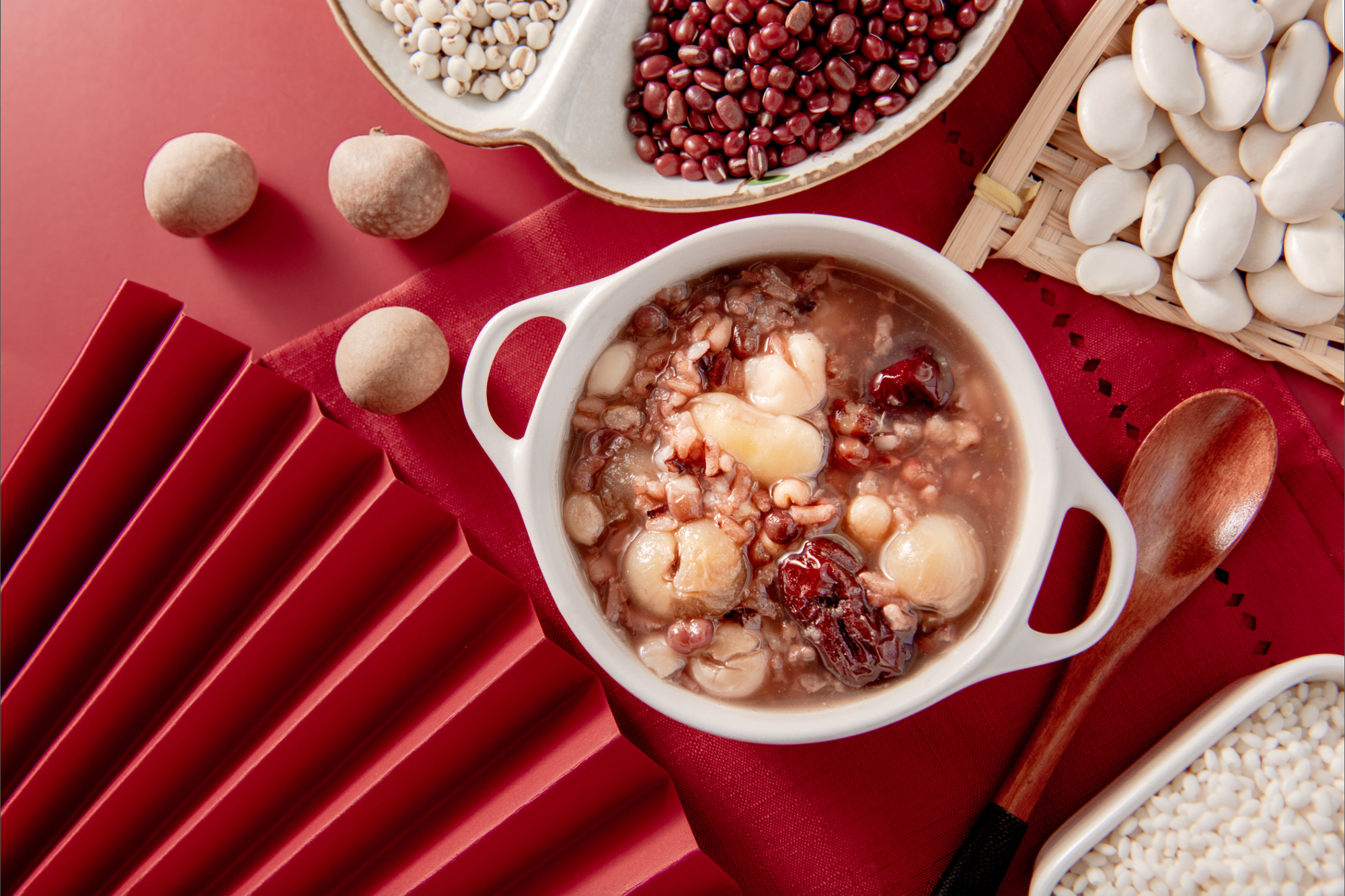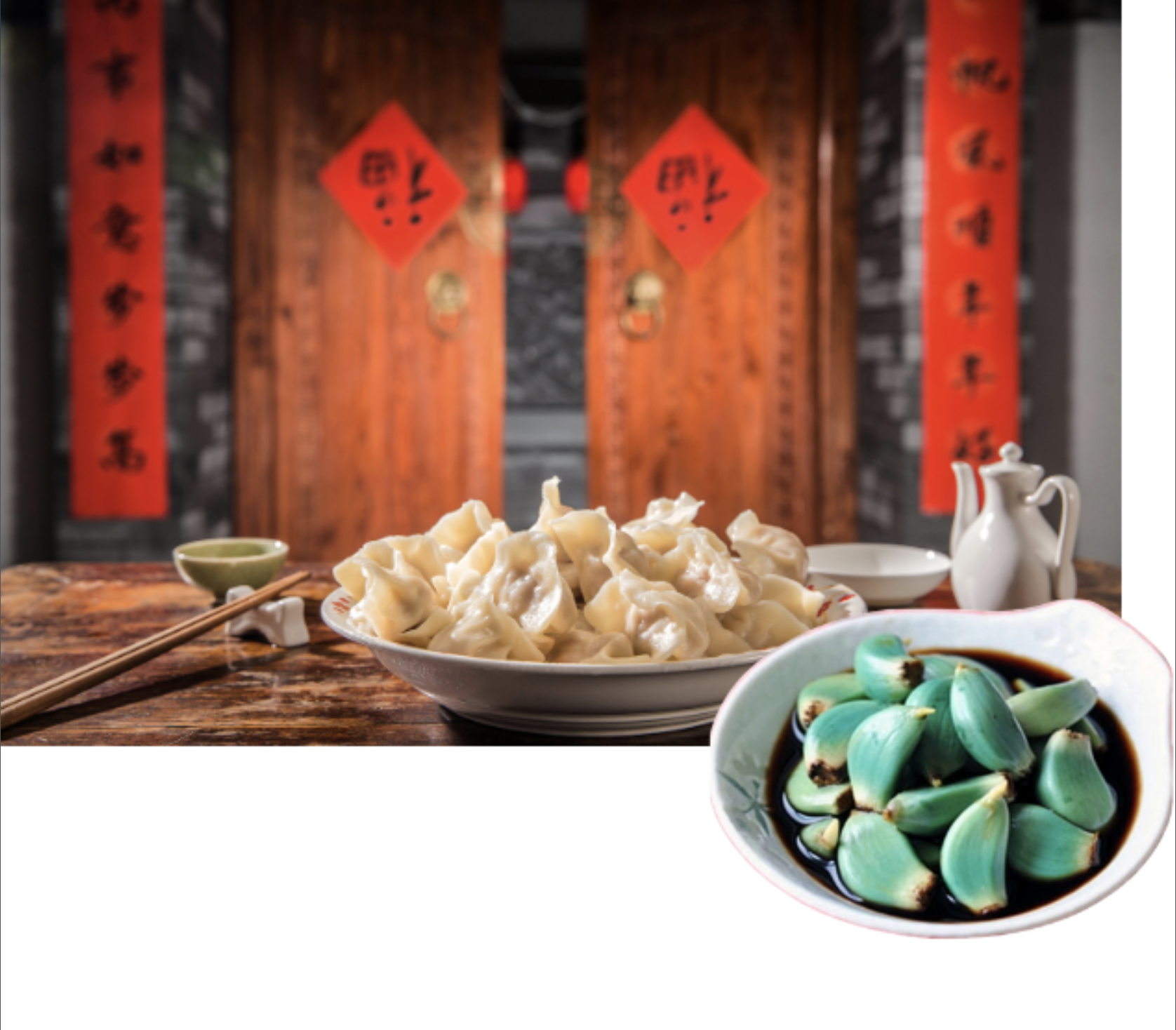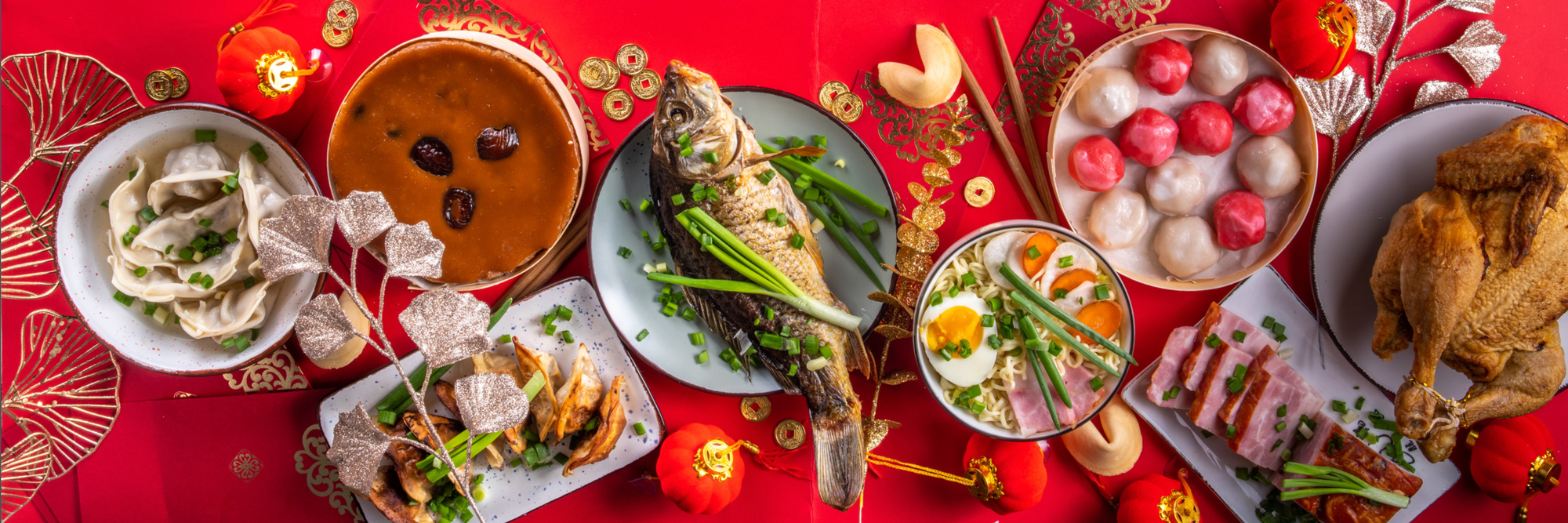From Laba to Lantern Festival

Today marks the Laba Festival, and a steaming bowl of Laba porridge heralds the beginning of the Chinese New Year celebrations. As the saying goes, "After Laba comes the New Year," and indeed, the Laba Festival signals the opening chapter of this festive season. Traditionally observed on the eighth day of the twelfth lunar month, the festival commemorates the Buddha's enlightenment and has evolved into a time for blessings and gratitude for a bountiful harvest. Besides Laba porridge, the northern regions of China have a distinctive custom of making Laba Garlic.

Laba Garlic is made by soaking garlic cloves in vinegar on the day of the Laba Festival. Over time, the garlic takes on a greenish hue, sometimes even turning jade-like. This transformation is seen as the sign of perfectly "matured" Laba Garlic. By the time of the Spring Festival, after about twenty days of soaking, the garlic cloves have a tangy, spicy flavor, and the vinegar—now known as Laba Vinegar—takes on a unique garlicky sharpness. During the Chinese New Year, dumplings are a staple in many northern households, and pairing them with Laba Garlic and dipping them in Laba Vinegar has become a classic culinary tradition. In addition to being a dumpling companion, Laba Garlic is also used to enhance cold dishes, providing a refreshing and appetizing flavor. This simple yet ingenious custom adds a touch of joy to the holiday table and embodies the anticipation of reunion and happiness.

After the Laba Festival, the festive atmosphere only grows stronger. In 2024, the Chinese New Year reached a significant milestone as it was officially inscribed on the UNESCO List of Intangible Cultural Heritage. Furthermore, in 2023, the Chinese Lunar New Year was officially designated as a global holiday by the United Nations, underscoring its growing global influence and importance.
Traditionally, preparations for the New Year intensify from the 23rd or 24th day of the twelfth lunar month, known as Little New Year. On this day, households honor the Kitchen God, praying for blessings and protection. This is followed by a whirlwind of festive preparations: cleaning the house to sweep away bad luck, buying new clothes, writing Spring Festival couplets, and decorating windows with intricate paper cuttings. The entire month is imbued with an air of joyous anticipation.
The pinnacle of the celebrations is Chinese New Year's Eve, the most festive night of the year. Families gather for a grand reunion dinner featuring symbolic dishes such as fish (representing surplus and abundance) and dumplings (shaped like ancient ingots, symbolizing wealth). As night falls, fireworks light up the sky, and the sound of firecrackers fills the air. Families stay up late to usher in the New Year, and at midnight, elders hand out red envelopes with money, known as lucky money, wishing the younger generation happiness and good fortune.

The festive spirit continues well beyond New Year's Eve. From the first to the fifteenth day of the lunar month, a variety of celebrations take place. On the first day, people visit relatives and friends, exchanging blessings and well-wishes, while children eagerly collect red envelopes. On the fifth day, known as the Day of Breaking Five, people welcome the God of Wealth, hoping to drive away bad luck and bring prosperity. The festivities reach their climax on the fifteenth day, the Lantern Festival, marked by eating sweet rice dumplings (symbolizing family unity), enjoying vibrant lantern displays, and solving riddles written on lanterns.

From the Laba Festival to the Lantern Festival, this period is not just a feast for the palate but also a celebration of Chinese culture. It reflects the deep affection for family, the aspiration for happiness, and the enduring vitality of tradition. Today, the Chinese New Year is a cultural treasure shared with the world, spreading its universal message of reunion and joy beyond borders.